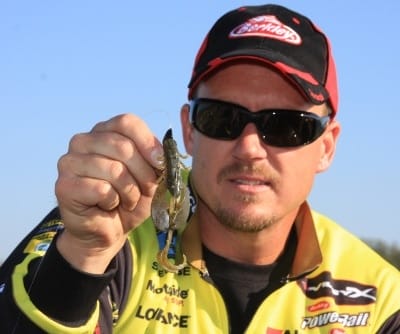 To watch the average bass tournament, often the outcome is so often decided on who finds the best stretch of bank. But what happens when the shallow bite isn’t there? Where do you go when the fish have closed the bank?
To watch the average bass tournament, often the outcome is so often decided on who finds the best stretch of bank. But what happens when the shallow bite isn’t there? Where do you go when the fish have closed the bank?
These days, I see lots of anglers – good anglers – who are seemingly chained to the bank. There’s a whole lot of water that these anglers never touch, water that holds plenty of big bass. The secret to catching these big bass isn’t really a secret at all. All it takes to go deep for big large and smallmouth bass is plenty of practice with electronics, knowing when to abandon the bank and knowing where to focus your efforts.
Before we get to all that, I think it’s important to explain that “deep” is a relative term. Fish are conditioned to their environment, and, as such, they require an angler to determine what “deep” really is. For the most part, though, deep water to me is anything over 22-25 feet. From there on down is what I consider to be “deep water.”
For me, the best time of year for really establishing a deep-water bite is in the fall when the lakes turn over and water starts cooling down. When we start getting those cold nights, fish start grouping up and using that outside deep water that’s available. Depending on where you are, of course, this starts probably in mid September and runs through parts of November, December and January. The second-best deep-water period for me happens right after the spawn in certain fisheries. I’ve found that especially lakes with a lot of big fish, by the early part of June I can catch fish deep. They haven’t gone into a full summertime water situation at that point, but they do go deep right after the spawn. This is when deep-water cranking can be really good. Just look for depth variations at 20-22 feet.
If I don’t know the lake very well, the first thing I do is a lot of Internet research. Once I’m there and I launch my boat, I turn on my electronics and go across a main portions of the lake: a river arm, a big bay or cove something that has a defined creek channel in it and just run a straight line from bank to bank. In a very short period of time you will start noticing the information on your electronics is really starting to direct you to a depth of the activity zone. For example, if I launch at Table Rock Lake and idle across the main portion of the lake, I might see balls of fish at 45 feet and nothing above those depths or below those depths. Then my mind starts trying to look for contours or structures that break or have some kind of features on them at that 45-foot depth. I rely so much on my electronics – they really do become my underwater eyes.
In order to develop good deep-water patterns, I have to have relatively clean water. For some reason, I don’t have good luck fishing deep in water that is really fertile or really dirty. I feel like a lot of techniques I’ve developed over the year are for fish that are feeding by sight. In clean water, fish have a tremendous field of vision. Even at extreme depths, fish can see 20 feet. That’s why with the techniques I use like a drop shot and cranking, you don’t have to be precise with the cast, because the fish will come to the lure as it sinks in the water column. Without a doubt my favroite drop shot bait is a Berkley PowerBait Hand Pour Finesse Worm. I use a lot of both the 4- and 6-inch sizes. I fish a lot of shad patterns in deep waters and some earth-toned colors and greens. To me, the lure presentation, not color, is most important when fishing a drop shot in deep water.
A drop shot is probably the best artificial rig I have ever fished in deep water. The drop shot is definitely a key technique, especially when the fish are below the depth of the cast when you can’t use a crankbait. If I’m casting jigs or fishing drop shots or a plastic worm deep, then I pretty much use all fluorocarbon line. For a drop shot, I try to fish 6-pound Trilene 100% Fluorocarbon because you get more bites with it than 8- or 10-pound line. But if I am near cover or catching better fish I will use 8-pound and sometimes 10. The new Trilene 100% Fluorocarbon is without a doubt one of the finest lines that has ever been introduced – I’ve gone nuts over it.
Don’t be afraid to try ice jig, spoons and big football-head jigs as well when fishing deep. Just don’t forget to do your homework and learn how to use your electronics and you can catch fish when the other people are still glued to the bank.
Skeet Reese is the 2007 BASS Elite Series Angler of the Year and an 8-time Bassmaster Classic qualifier. Reese lives in Auburn, Calif.







